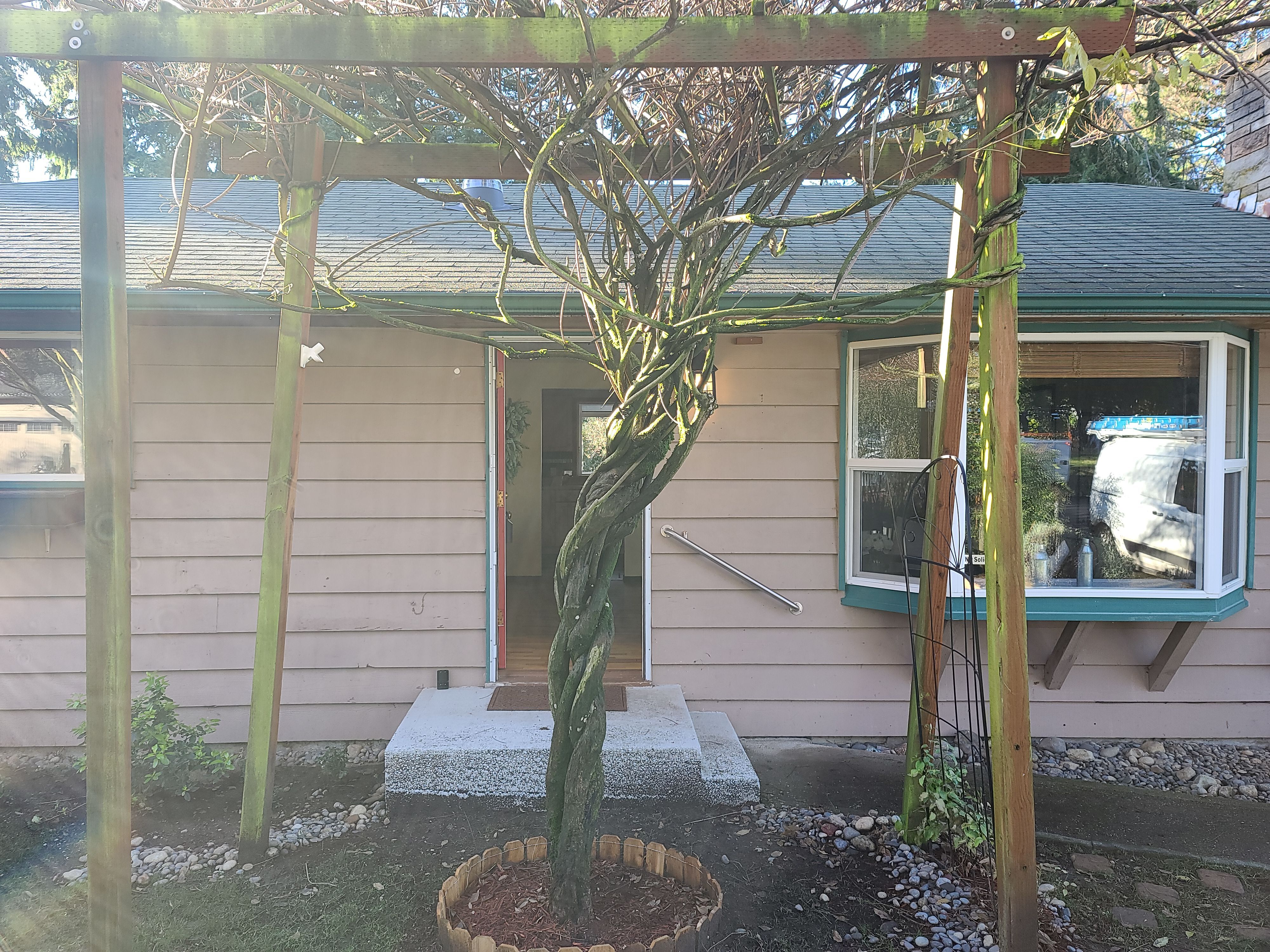Wood Destroying Organisms
This report includes a structural pest inspection embedded within the report. All observations in this report that begin with WDO are a part of a WA State Pest Inspection. Orca Inspection Services LLC employs Dylan Chalk, Licensed Structural Pest Inspector ##65540. Please note that most WDO observations are related to high moisture conditions that could be conducive to mold-like substances. Orca Inspection Services LLC is not a mold specialist and recommends consulting with an industrial hygienist or other mold remediation expert if concerned about mold or indoor air quality.Pest Inspection Standards in Washington State - WAC 16-228-2045 - REQUIRES THAT A DIAGRAM / DRAWING BE PREPARED FOR WOOD DESTROYING ORGANISM (WDO) REPORTS. IF THE PHOTOS AND DESCRIPTIONS IN THIS REPORT ARE INADEQUATE, A DRAWING IS AVAILABLE UPON REQUEST.
Summary
Major Concerns
- RCG2-1 Roof, Chimney and Gutters:
This roof is done in a three tab composition shingle. The roof looks to be in the last phase of its reliable service life. Roof repairs are needed if this roof is to be reliably kept in service. Examples of specific observations noted during inspection include:
- Nails used - should not be in the tar strip - cannot correct at this point but could impact long-term performance.
- No curling or cupping noted - this is good.
- The flashing around the electric mast is damaged and vulnerable to leaks.
- Missing counter flashing south side of masonry chimney - this is vulnerable to leaks
- Hole in shingle - north side.
- Prior repairs noted to the entry-side light tube - looks like a new skylight here.
- Nail pop - leak point - south side.
- Deteriorated apron flashing around the bubble style skylights on the back side of the house
- Hole in the shingles at the south side from an old nail pop.
- Hole noted in the hip roof at the southwest corner
- Corrosion on the apron of the plumbing vent flashings
- Rubber flashing starting to break down at the plumbing vent flashing
- Granule loss on some of the ridge shingles.
- No drip edge flashing was noted for the roof - these are now required. This will have to be done during the next re-roof.
Recommendation
Hire a qualified roofing contractor to further evaluate and repair or replace this roof as recommended to ensure reliable performance.
Repairs
- RCG2-3 Roof, Chimney and Gutters:
Organic growth was noted on the masonry chimney. This can be bad for the chimney and trap water in the masonry and hasten deterioration of brick and mortar. Consult with a qualified mason about options for cleaning and sealing the chimney and repairing failing mortar or sealing any cracks as needed.
- RCG2-5 Roof, Chimney and Gutters:
A rain cap and spark arrestor is recommended for the chimney flue to prevent water damage inside the flue, to reduce risks of bird and insect entry into the flue and to reduce risks from sparks exiting the flue.
- RCG2-6 Roof, Chimney and Gutters:
The gutters are clogged with organic debris and require cleaning and an all-around tune-up as multiple places were noted where gutters and downspouts are leaking and not sloped to drain. Clean the gutters and implement tune-up repairs to ensure they are unobstructed, well fastened, leak free and sloped to drain.
- P-7 Plumbing:
No drain pan has been installed below the water heater here. A drain pan is recommended under water heaters that are located in finished spaces or where a leak could damage finishes. Where a pan does not already exist, the tricky part is providing a drain to the outside. A pan without a drain is often of limited benefit / protection. For improved protection from accidental water heater leaks, and where a drain is difficult to install, consider a pan with a moisture alarm and a flood-safe device such as this: Watts Water Heater Leak Prevention.
Recommended Maintenance Items
- G-2 Grounds:
Downspouts are discharging adjacent to the foundation. This can cause foundation settlement or basement moisture problems. Make sure all downspouts discharge into a proper tight-line system that diverts water at least 5 feet away from the foundation.
- G-4 Grounds:
Pruning trees, branches and vegetation away from the house is recommended. Where trees, branches and large shrubs can provide rodent access to the roof, a minimum 6-foot clearance is recommended as many rodents can jump 6-feet. All vegetation, including smaller landscaping such as grasses, flowers and shrubs should be kept 1-foot off the house to eliminate contact which could trap moisture against the building.
Improve Or Upgrades
- LAP-1 Laundry and Additional Plumbing:
A moisture alarm with water shut-off features is recommended under the washing machine to protect against accidental leaks in the supply hoses. Pans can be effective when there is a drain, but even these will not protect against a burst supply connector. A moisture alarm with automatic shut-off will. Watts is a brand I have seen installed: Link.
- MB-3 Master Bathroom:
No ventilation fan was noted in the family bathroom; there is a window but no fan. Fans that vent to the exterior are recommended and will help reduce indoor humidity and risks for molds. Installation of a bath fan is recommended.
.png)





